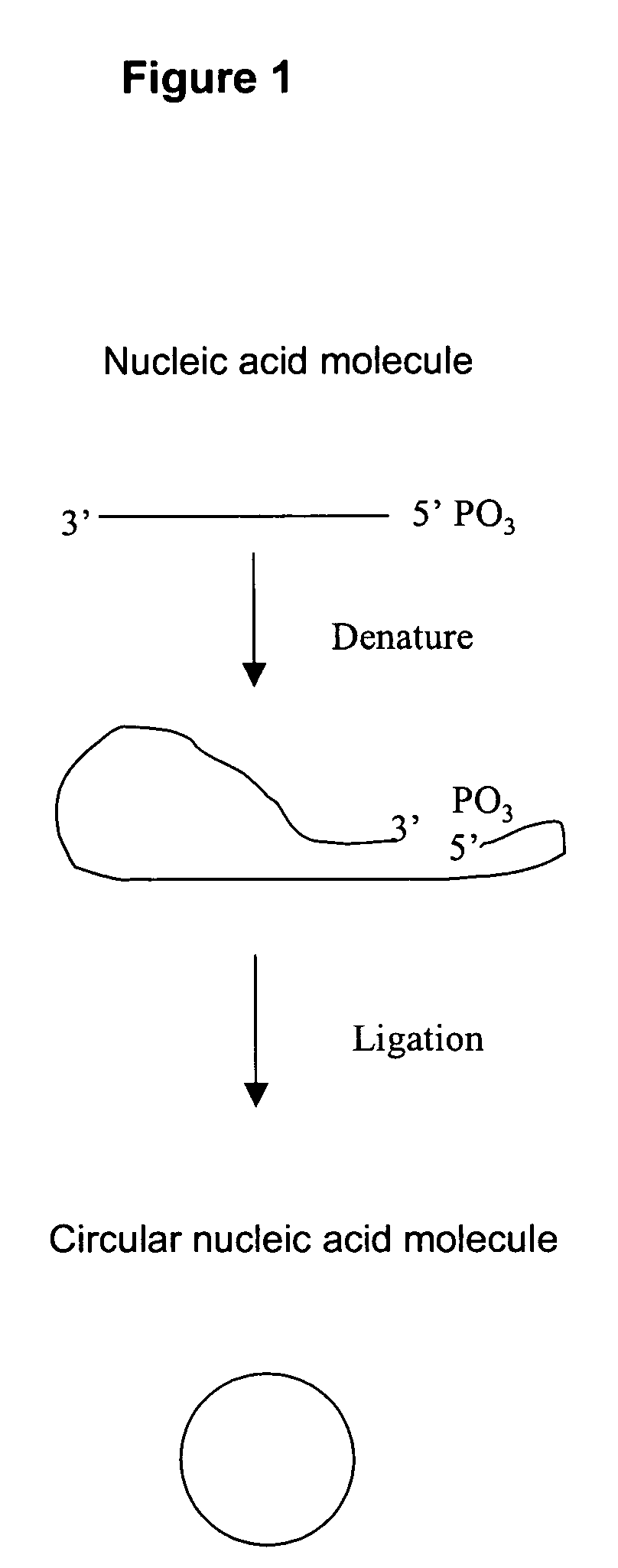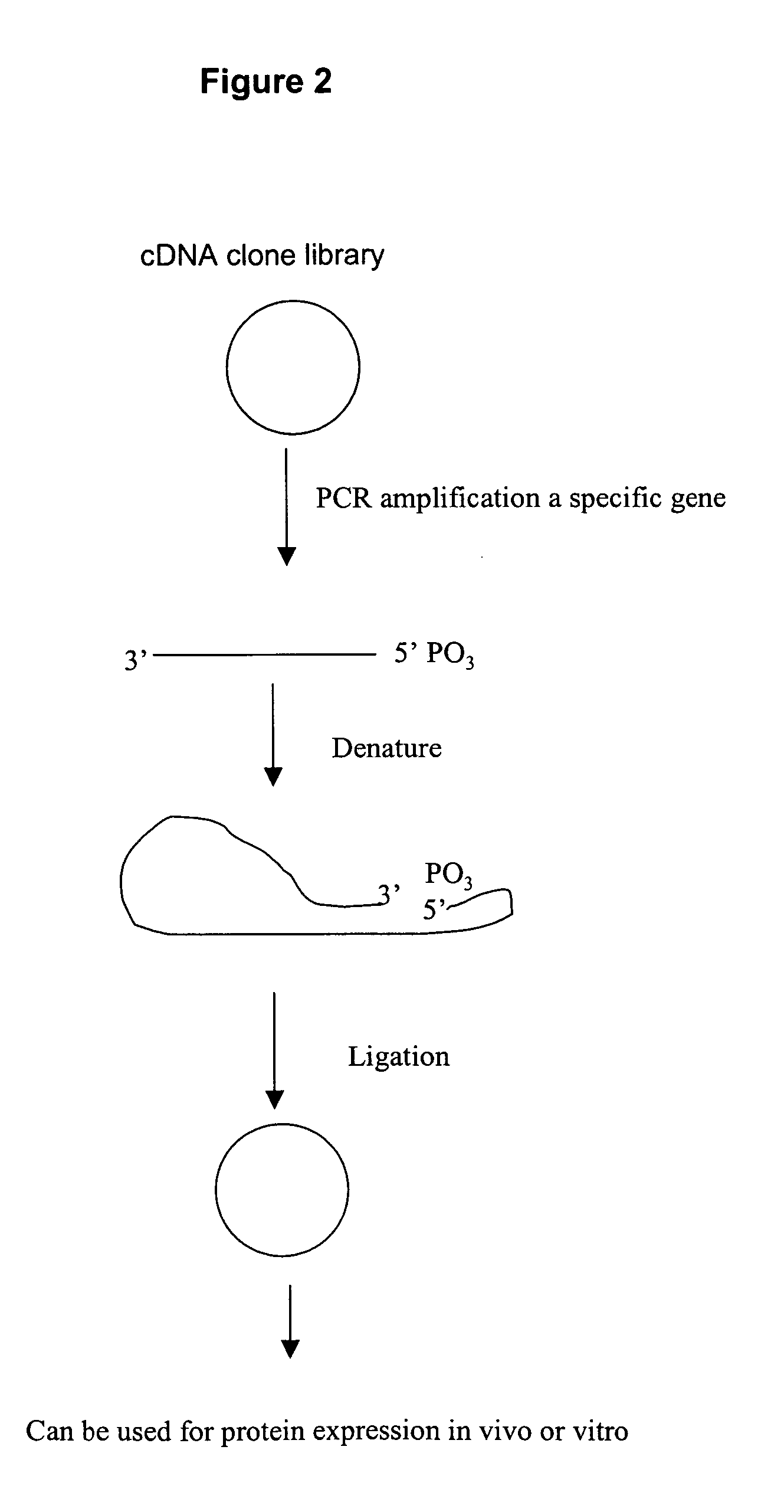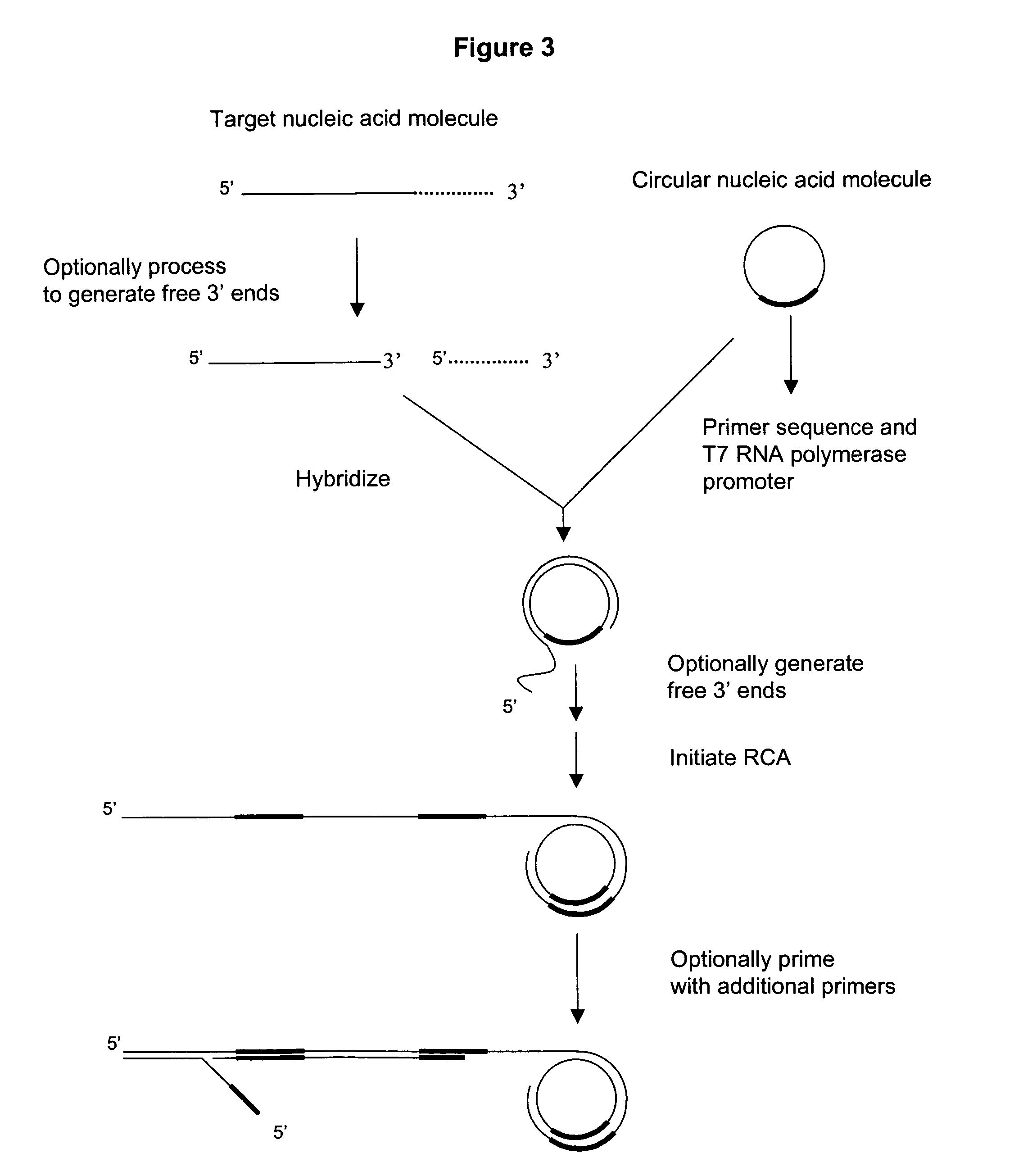Amplification of polynucleotide sequences by rolling circle amplification
a polynucleotide sequence and amplification technology, applied in the field of nucleic acid amplification by rolling circle amplification, can solve the problems of increasing cost, less than optimal production, and artifacts due to mispriming or mismatch
- Summary
- Abstract
- Description
- Claims
- Application Information
AI Technical Summary
Benefits of technology
Problems solved by technology
Method used
Image
Examples
example 1
Synthesis of the cDNA with Complementary Ends
[0123] MMLV reverse transcriptase (RT) has the ability to add cytosine residues to the 3′ end of newly synthesized cDNAs upon reaching 5′-end of the mRNA template. Usually 2-4 cytosine residues are added, depending on the reaction conditions.
[0124] mRNA is purified using standard methods that prevent RNA degradation. Small amounts of mRNA, as low as picrogram amounts, are used as the target nucleic acid molecule. A first strand synthesis primer containing poly(dT) and a T7 transcriptional promoter at its 5′ end, primer 1, and MMLV reverse-transcriptase enzyme are added to the mRNA sample. The poly(dT) sequence of the first strand synthesis primer anneals to the poly(A) tail of mRNA, serving as a primer for reverse-transcriptase to synthesize first strand cDNA. Simultaneously, primer 2 anneals to primer 1. At the 3′ end of the first strand cDNA, reverse-transcriptase adds a few cytosine residues. The 5′ end of first strand cDNA has the T...
example 2
Synthesis of the cDNA with LoxP Recombination Sites
[0129] A LoxP recombination site may be added by oligo switch technology. An oligonucleotide with oligo(G) or oligo(rG) sequences at its 3′ most end is included in the first strand cDNA synthesis medium. Its terminal 3-4 G residues will base pair with the 2-4 C residues of the newly synthesized cDNA, thus serving as a new template for the RT (template switch). The RT then switches the template and replicates the sequence of the oligo(G) oligonucelotide, thus including the complementary CapFinder oligonucleotide sequence at the 3′ end of the newly synthesized cDNA.
[0130] Primer 3: 5′-d(LoxP sequence)+d(T)15-3′
[0131] Primer 4: (sequence for oligo switch) 5′-d(LoxP sequence)r(GGGp)-3′
[0132] 10 pmol of cDNA synthesis primer 3 are annealed to 1 μg of human placenta poly(A)+ RNA (Clontech), in a volume of 5 μl of deionized water, by heating the mixture for 2 minutes at 70° C., followed by cooling on ice for 2 minutes. First-strand cDNA ...
example 3
[0134] An alternative method is to use terminal transferase enzyme to add homologous sequences to the 3′ end of the first strand cDNA.
[0135] The synthesized first strand cDNA is purified with Qiagen kit. Then the first strand 0.5 ug cDNA is mixed with 0.5 uM dCTP, 1× Reaction buffer of Terminal Transferase and 1 unit of Terminal transferase (Finnzymes) at 37 degree for 1.5 hours. The resulting solution is purified with Qiagen kit and detected with Bioanalyer (Agilent). It is finally quantified with Nanodrop absorbance indicating 0.45 ug of cDNA.
PUM
| Property | Measurement | Unit |
|---|---|---|
| temperature | aaaaa | aaaaa |
| volume | aaaaa | aaaaa |
| volume | aaaaa | aaaaa |
Abstract
Description
Claims
Application Information
 Login to View More
Login to View More - R&D
- Intellectual Property
- Life Sciences
- Materials
- Tech Scout
- Unparalleled Data Quality
- Higher Quality Content
- 60% Fewer Hallucinations
Browse by: Latest US Patents, China's latest patents, Technical Efficacy Thesaurus, Application Domain, Technology Topic, Popular Technical Reports.
© 2025 PatSnap. All rights reserved.Legal|Privacy policy|Modern Slavery Act Transparency Statement|Sitemap|About US| Contact US: help@patsnap.com



